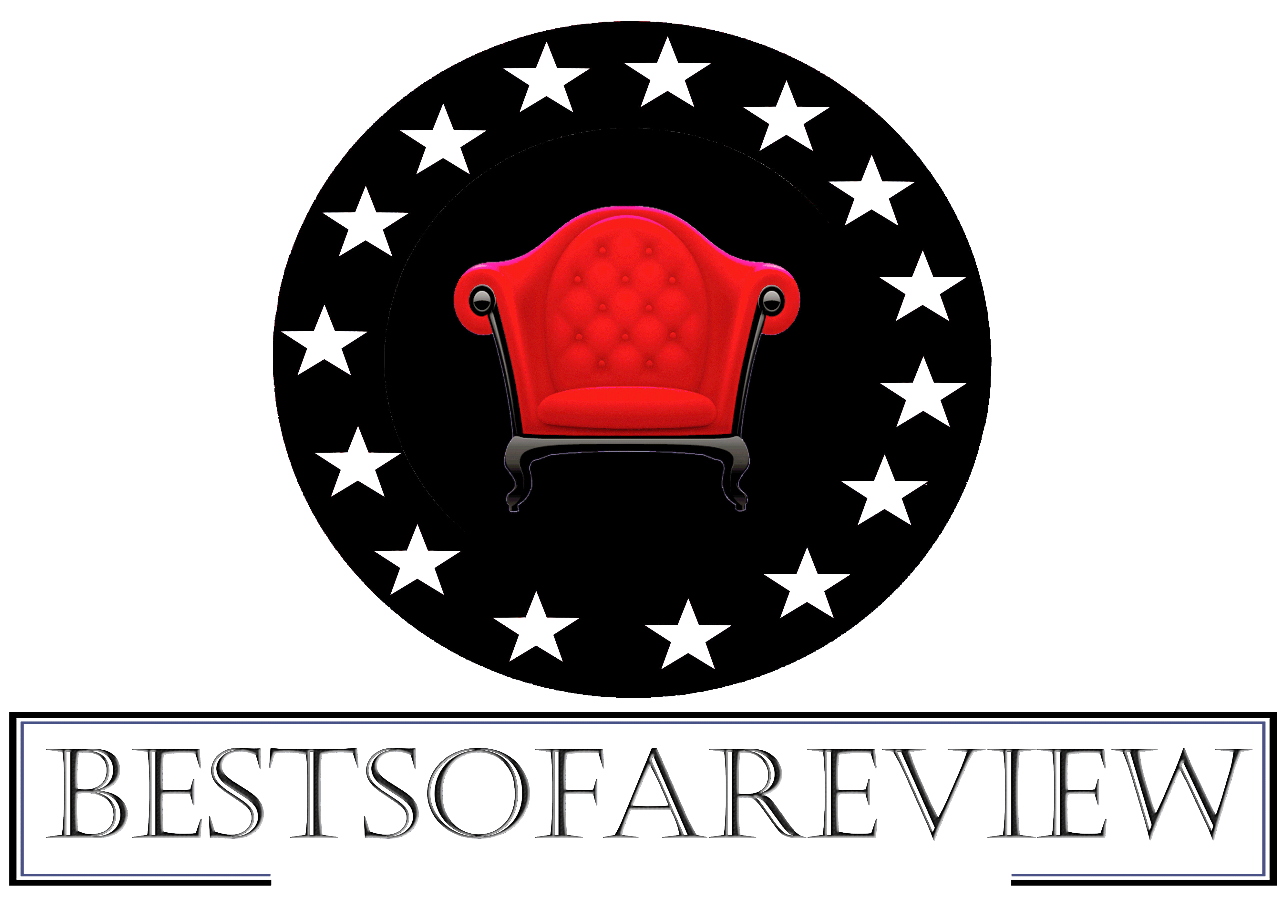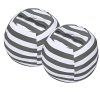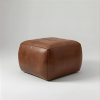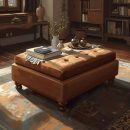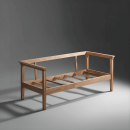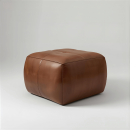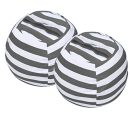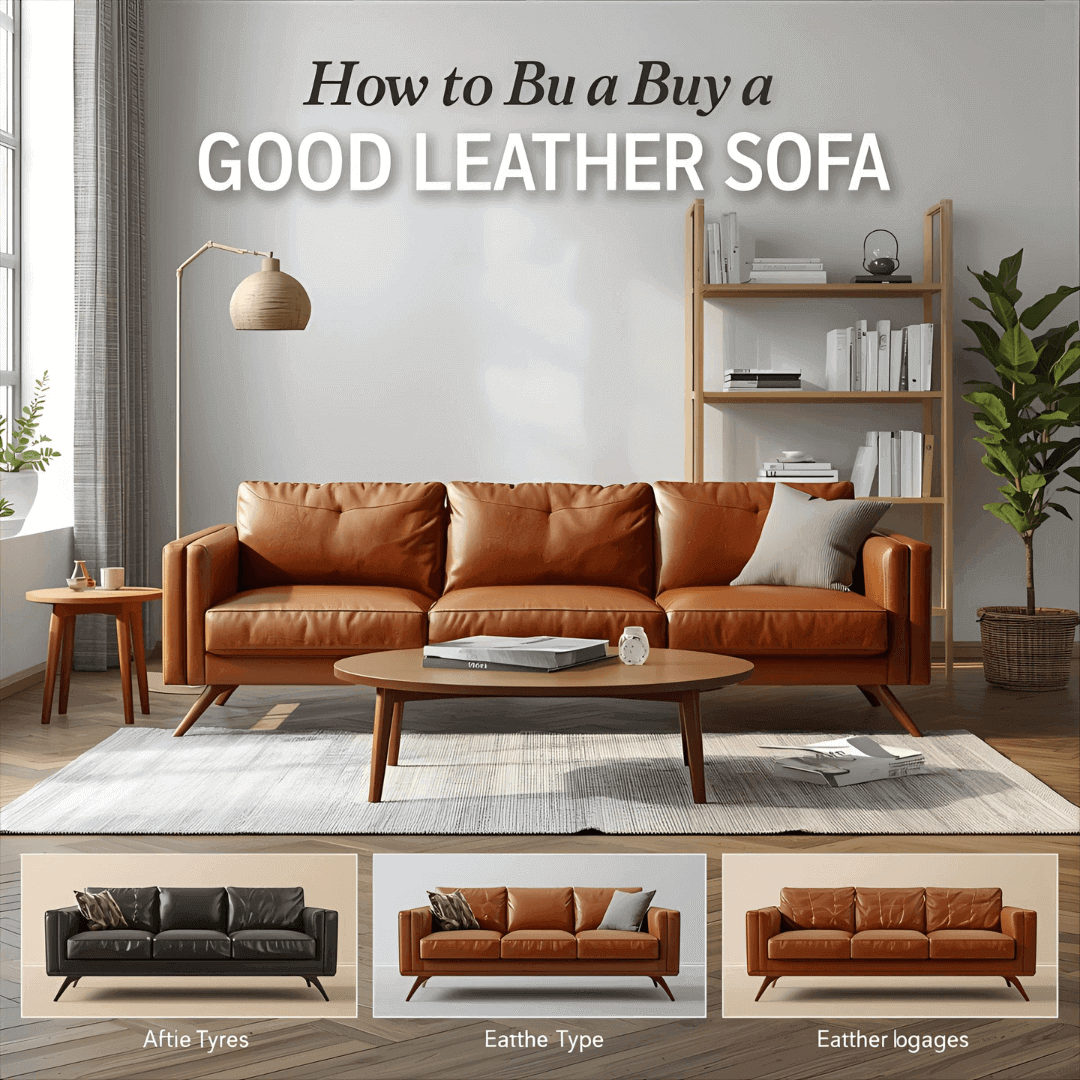
Looking for the perfect leather sofa can feel overwhelming. You want something that looks great, feels comfortable, and lasts for years.
But how do you know which one is truly worth your money? In this guide, you’ll discover simple tips to choose a leather sofa that matches your style and meets your needs. By the end, you’ll feel confident making a smart purchase that transforms your living space.
Ready to find your ideal sofa? Let’s dive in.
Choosing The Right Leather
Choosing the right key step in buying a good leather sofa. The type and quality of leather determine the sofa’s look, feel, and durability. Understanding leather types and grades helps you pick the best genuine leather sofa for your home. This guide provides essential information about leather to help you find the best value and quality sofa.
Types Of Leather
Leather comes in several types, each with unique features. Knowing these helps you select the perfect leather sofa single or a leather sofa 3 seater. Here are the main types:
- Full Grain Leather: The top layer of the hide is firm and natural. It develops a beautiful patina over time.
- Top Grain Leather: Slightly sanded and treated to remove imperfections. Softer but less durable than full grain.
- Corrected Grain Leather: Sanded and coated with a finish to hide flaws. Looks uniform but less natural.
- Split Leather: Made from the lower layers of hide. Often used in cheaper sofas and are less durable.
- Bonded Leather: Made from leather scraps glued together. Durable and not true leather.
For a luxury leather sofa set or high-quality modern leather sofa, full-grain and top-grain leathers are the best choices. They offer durability and comfort. Bonded or split leather sofas are less durable and may not last long.
Leather Quality Grades
Leather quality grades how strong and natural the leather is. Grades affect the sofa’s price and life span. Here are common leather quality grades:
| Grade | Description | Best Use |
|---|---|---|
| Full Grain | Highest quality, natural surface with all grain layers intact. | Best for most durable leather sofas and a luxury leather sofa set. |
| Top Grain | Second-highest, surface sanded and finished for a smooth finish. | Ideal for the best, most comfortable leather sofas and high-quality leather sofa brands. |
| Corrected Grain | Surface buffed and coated to hide imperfections. | Used in mid-range sofas with a uniform look. |
| Split Leather | Lower layer, with a weaker and less natural texture. | For budget sofas with less wear resistance. |
| Bonded Leather | Leather scraps mixed with polyurethane and glued. | Lowest quality, cheaper furniture. |
Choosing a leather sofa means balancing quality and price. A full-grain leather sofa offers the best comfort and durability. Top grain leather can provide a softer feel while still lasting longer. This helps find the best genuine leather sofa for your budget.
Full-grain Vs Top-grain
Full-grain and top-grain leather are the top choices for high-quality leather sofa brands. Both have strong qualities but differ in look and feel:
- Full-Grain Leather: This leather keeps the original grain and natural marks. It is very durable and ages beautifully. It is used in the best quality leather sofa and the most durable leather sofas. The surface may show scars, but this adds character.
- Top-Grain Leather: This leather is sanded to remove blemishes and then coated. It looks smooth and even, but is less breathable than full-grain leather. It suits those who want a clean, uniform look in their 3 seater leather sofa or single leather sofa.
The full-grain leather sofa develops a rich patina over time, making it more attractive. Top grain leather offers a softer touch and easier cleaning. Both types provide comfort and style for a luxury leather sofa set or a high-quality modern leather sofa.
Choosing between full-grain and top-grain depends on your preference for a natural look or a smooth finish. For the most comfortable leather sofas, full-grain is often the best choice for lasting quality. Top grain leather works well for those who want a polished appearance with good durability.
Assessing Sofa Construction
Assessing sofa construction is crucial before buying a good leather sofa. The construction affects comfort, durability, and overall value. A well-built sofa lasts longer and keeps its shape and support. Understanding the key elements like frame materials, cushion filling, and stitching helps make a smart choice. This section breaks down these components to guide your purchase.
Frame Materials
The sofa frame is the skeleton that holds everything together. It must be strong and sturdy to support weight and daily use. Common frame materials include:
- Hardwood: Oak, maple, and beech are strong and durable. They resist warping and last many years.
- Softwood: Pine is cheaper but less durable. It can dent or warp over time.
- Plywood: Layers of wood glued together offer good strength. Look for high-grade plywood for better durability.
- Metal: Steel or iron frames are very strong but can be heavy and cold to the touch.
Check the sofa frame by pressing firmly on the corners and joints. A solid frame should not creak or wobble. Avoid sofas with frames made of particleboard or plastic, as they break easily.
| Material | Durability | Cost | Common Use |
|---|---|---|---|
| Hardwood | High | High | Premium sofas |
| Softwood | Medium | Low | Budget sofas |
| Plywood | High (if quality) | Medium | Mid-range sofas |
| Metal | Very High | Medium to High | Modern designs |
Cushion Filling Options
Cushion filling defines comfort and support in a leather sofa. Different fillings offer different feels and durability. Common options include:
- Foam: Dense foam holds shape well and provides firm support. It can feel stiff or soft based on density.
- Feather and Down: Soft and plush, but requires regular fluffing. May lose shape faster than foam.
- Polyester Fiber: Affordable and soft, but it can flatten quickly.
- Memory Foam: Adapts to body shape for comfort. But it may be expensive.
Choose cushions with a combination of foam and feather for balanced comfort and durability. High-resilience foam lasts longer and resists sagging. Test cushions by pressing down. They should spring back quickly without feeling too hard or too soft.
| Filling Type | Comfort Level | Durability | Maintenance |
|---|---|---|---|
| Foam | Firm to Medium | High | Low |
| Feather/Down | Soft and Plush | Medium | High (needs fluffing) |
| Polyester Fiber | Soft | Low | Low |
| Memory Foam | Medium to Soft | High | Medium |
Stitching And Craftsmanship
Stitching quality shows the sofa’s craftsmanship. Well-stitched sofas last longer and look better. Check these points:
- Even stitches: Look for uniform stitches with no loose threads.
- Double stitching: Adds strength to seams and prevents tearing.
- Corner reinforcement: Extra stitches at corners to improve durability.
- Leather tension: The leather should be tight but not overly stretched or wrinkled.
Good craftsmanship means attention to detail. Handles, legs, and joints should fit perfectly without gaps. Inspect the sofa closely under good light to find any flaws. A quality sofa feels solid and well-built.
Sizing And Comfort
Choosing the right size and comfort level when buying a good leather sofa. A sofa that fits perfectly in your room and feels comfortable makes your living space inviting. Many people focus on style or price, but neglect sizing and comfort. This can lead to a sofa that looks nice. But feels awkward or too big. Understanding how to measure your space, check seat depth and height, and test comfort levels helps you pick a sofa you will enjoy for years.
Measuring Your Space
Start by measuring the area where you want to place the leather sofa. Use a tape measure and note the width, length, and height of the space. Keep these points in mind:
- Allow enough clearance: Leave at least 18 inches of space between the sofa and walls or other furniture.
- Consider pathways: Ensure there is room for people to walk around comfortably.
- Check doorways and hallways: Measure doors and hallways to make sure the sofa can be brought inside easily.
Use this simple table to organize your measurements:
| Area | Measurement | Notes |
|---|---|---|
| Sofa Width | _____ inches | Max width fitting the space |
| Sofa Length | _____ inches | Length available in room |
| Ceiling Height | _____ inches | To avoid oversized backrests |
| Door Width | _____ inches | For sofa delivery |
Measure twice to avoid mistakes. Write down all numbers. This helps when shopping online or in stores. Do not guess the space size. A sofa too large makes the room tight. Too small looks odd and offers less comfort.
Seat Depth And Height
Seat depth and height determine the level of comfort a sofa provides. These dimensions should match your body size and sitting habits.
Here is what to check:
- Seat Depth: Ideal depth is between 20 to 24 inches. Deeper seats suit taller people or those who like lounging.
- Seat Height: Standard height is 17 to 19 inches from the floor to the seat. Lower seats are cozy but harder to get up from.
Use this table as a guide:
| Dimension | Standard Range | Best For |
|---|---|---|
| Seat Depth | 20 – 24 inches | Taller people, lounging |
| Seat Height | 17 – 19 inches | Most adults, easy to sit |
Test different sofas to feel the difference. A sofa with the right seat height keeps your feet flat on the floor. Proper seat depth supports your back without sliding forward. Choose a sofa that matches your body shape and daily use.
Testing Comfort Levels
Comfort is personal. Testing sofas before buying is important. Here is how to check comfort:
- Sit on the sofa: Spend several minutes in different positions—sitting upright, lounging, or lying down.
- Check cushion firmness: Press cushions with your hand. Medium firmness suits most people. Too soft cushions lose shape fast.
- Feel the leather: Soft, high-quality leather feels smooth and warm. Avoid plastic-like or stiff leather.
- Test armrests and back support: They should support your arms and back comfortably without strain.
Ask yourself:
- Does the sofa support my back well?
- Is it easy to get up from the sofa?
- Can I relax here for long periods?
Comfort depends on cushion filling, too. Memory foam offers firm support. Feather cushions feel soft but need fluffing. Try to find a balance that works for you.
Style And Design Choices
Choosing the right style and design for a leather sofa shapes the room’s entire mood. A sofa is more than just a place to sit. It’s a statement piece that reflects personal taste and complements your living space. The style and design choices include how the sofa fits your current decor, the color that matches your walls and accessories, and the shape of armrests and legs. These factors affect comfort and aesthetics. The right combination ensures the sofa feels like part of the home.
Matching Your Decor
Matching a leather sofa with your decor creates harmony in the room. The sofa should blend with your furniture, wall colors, and overall style.
Consider the following:
- Room Theme: Modern, classic, rustic, or minimalist styles need different sofa designs.
- Existing Furniture: Match the sofa’s leather texture and finish with chairs, tables, or rugs.
- Space Size: Large sofas are suitable for big rooms; small sofas fit compact spaces better.
Use this simple table to check style compatibility:
| Room Style | Leather Sofa Style | Recommended Features |
|---|---|---|
| Modern | Sleek, low-profile | Smooth leather, straight lines |
| Classic | Chesterfield, tufted | Button details, rolled arms |
| Rustic | Distressed leather | Natural tones, rugged texture |
| Minimalist | Simple, clean shapes | Matte leather, neutral colors |
Choosing a sofa that fits your decor avoids clashes and highlights the room’s best features. It also makes the space feel inviting and comfortable.
Color Selection
The leather sofa color sets the room’s tone and mood. The right color blends with your decor and suits your lifestyle. Dark colors hide stains and wear, while light colors brighten the room.
Consider these points when selecting color:
- Room Size: Light colors make small rooms feel bigger.
- Lighting: Natural light changes color and looks different during the day.
- Maintenance: Dark leather is easier to keep clean.
- Personal Style: Bold colors, red or blue, create a statement.
Here is a quick guide to popular leather sofa colors:
| Color | Best For | Pros | Cons |
|---|---|---|---|
| Black | Modern, formal spaces | Elegant, hides stains | Can feel heavy, absorbs light |
| Brown | Traditional, rustic rooms | Warm, natural look | Shows dust easily |
| Tan | Casual, minimalist styles | Brightens space, versatile | Needs regular cleaning |
| White | Contemporary, airy rooms | Fresh, modern feel | Shows dirt, hard to maintain |
A sofa color that fits your daily life and complements your walls and decor items. It helps create a balanced and welcoming space.
Armrest And Leg Styles
The shape and style of armrests and legs affect the sofa’s look and comfort. These details add character and influence how the sofa fits your space. Consider the following options:
- Armrest Styles:
- Rolled Arms: Classic and comfortable, fit traditional rooms.
- Square Arms: Modern and sleek, they suit contemporary spaces.
- No Arms: Open and minimal, good for small rooms.
- Sloped Arms: Casual and relaxed, add softness.
- Leg Styles:
- Tapered Legs: Modern look, lifts sofa off the floor.
- Block Legs: Sturdy and simple, they suit rustic decor.
- Turned Legs: Decorative and classic, adding elegance.
- Hidden Legs:Creates a low-profile, streamlined style.
Here is a comparison table of armrest and leg styles:
| Feature | Style | Look | Comfort Level |
|---|---|---|---|
| Armrest | Rolled | Traditional | High |
| Armrest | Square | Modern | Medium |
| Armrest | No Arms | Minimalist | Low |
| Leg | Tapered | Mid-century modern | N/A |
| Leg | Block | Rustic | N/A |
| Leg | Turned | Classic | N/A |
Choose armrest and leg designs that match your comfort needs and room style. These small details make a big difference in the sofa’s appeal.
Budget Considerations
Buying a good leather sofa requires careful budget considerations. Knowing how much to spend helps narrow down choices and avoid overspending. Leather sofas come in various prices, and understanding these can make the buying process easier. Your budget affects the sofa’s quality, style, and durability. Plan your budget first, then explore options that fit within it.
Price Ranges
Leather sofas vary widely in price. Here is a simple guide to common price ranges:
| Price Range | What to Expect | Examples |
|---|---|---|
| Under $800 | Lower-grade leather or bonded leather; less durable | Basic sofa with a synthetic leather look |
| $800 – $2000 | Genuine leather; better durability and comfort | Mid-range leather sofa sets |
| $2000 and up | Pure leather sofa set price for the highest quality leather couches, long-lasting | Luxury leather sofas; designer brands |
Price depends on leather quality, sofa size, brand, and design. Pure leather sofas cost more but last longer. Lower prices may mean less comfort and faster wear. Check product details carefully. Look for clear information about leather quality and sofa construction.
Balancing Cost And Quality
Finding the right balance between cost and quality is essential. Spending too little may lead to a sofa that wears out quickly. Spending too much money on features you do not need.
- Inspect the leather: Full-grain leather is the highest quality.
- Consider bonded leather: Cheaper, but less durable and less comfortable.
- Check sofa frame: Solid wood frames last longer than particleboard.
- Look for a warranty: A good warranty shows confidence in quality.
Decide what matters most: durability, comfort, or style. Sometimes mid-range sofas offer the best value. They use genuine leather and good frames without high luxury prices. Avoid very cheap sofas unless on a tight budget. They may need replacement sooner.
When To Splurge Or Save
Knowing when to spend more or save money helps smart buyers. Spend more on parts that wear fast or affect comfort.
- Leather quality: Highest quality leather couches feel soft and comfortable.
- Save on style: Choose the simpler designs if on a budget.
- Frame and cushions: These affect the sofa’s life and comfort.
- Save on extras: Avoid costly add-ons built into recliners if not needed.
The pure leather sofa set is worth it for long-term use. Saving money on the frame or cushions may lead to repairs. Spend more if you want your sofa to last 10+ years. Save if you plan to change furniture soon.
Maintenance And Durability
Owning a leather sofa is an investment in style and comfort. Maintenance and durability play a big role in keeping it looking great for years. Leather needs care to stay soft and strong. Regular upkeep stops cracks and fading. Durable leather can handle daily use without losing its charm. Understanding How To Clean Leather Couch Naturally, protect, and extend your sofa’s life to helps you enjoy it longer. This guide covers simple steps to maintain your leather sofa well.
Cleaning Tips
Cleaning a leather sofa is simple but requires care. Use gentle methods to avoid damage. Follow these steps for daily and deep cleaning:
- Dust often: Use a soft, dry cloth to wipe the surface weekly.
- Vacuum crevices: Use a brush attachment to remove dirt from seams.
- Spot clean spills: Blot immediately with a clean, dry cloth. Avoid rubbing.
- Use mild soap: Mix a few drops of gentle soap with water. Dampen a cloth, wipe gently, then dry with a soft towel.
- Avoid harsh cleaners: Stay away from bleach, ammonia, or alcohol-based products.
Deep cleaning every 6-12 months helps remove built-up dirt. Test any cleaning product on a hidden area first. Some leathers are sensitive to water. Follow the manufacturer’s advice for your sofa type.
| Cleaning Step | Tools Needed | Frequency |
|---|---|---|
| Dusting | Soft dry cloth | Weekly |
| Vacuuming | Vacuum brush attachment | Weekly |
| Spot Cleaning | Clean cloth, mild soap | As needed |
| Deep Cleaning | Mild soap, water, soft cloth | Every 6-12 months |
Protecting Your Sofa
Protecting a leather sofa helps keep it fresh and strong. Avoid direct sunlight to stop fading and drying. Place your sofa away from heaters or air conditioners. These can cause the leather to crack.
Use leather conditioner every 6 months. It keeps the leather soft and prevents damage. Apply with a soft cloth and follow product instructions. Avoid using too much product to stop buildup.
Set rules to protect the sofa from sharp objects. Watch pets and children near the leather. Use throws or covers in high-use areas. These simple actions keep your sofa safe and looking new.
- Keep away from sunlight and heat
- Apply leather conditioner regularly
- Use covers or throws to protect from spills and scratches
- Avoid sharp objects near the sofa
| Protection Tip | Benefit |
|---|---|
| Sunlight avoidance | Prevents fading and drying |
| Leather conditioner | Maintains softness and elasticity |
| Use of covers | Protects from spills and scratches |
| Safe placement | Prevents damage from heat sources |
Longevity Factors
Several factors determine how long a leather sofa lasts. lasts. Quality of leather is key. Full-grain leather lasts longer than bonded or split leather. The sofa’s frame and stitching also matter. A strong hardwood frame and durable thread improve lifespan.
Proper maintenance extends life. Regular cleaning and conditioning prevent cracks and wear. Avoid heavy sitting or jumping on the sofa. This reduces stress on the structure and leather.
Environmental conditions also impact durability. Keep the sofa in a room with a stable temperature and humidity. Too much moisture or dryness harms leather.
| Factor | Impact on Durability |
|---|---|
| Leather type | Full-grain leather lasts longest |
| Frame quality | Hardwood frames provide strong support |
| Maintenance | Regular care prevents damage |
| Usage habits | Avoid heavy pressure and rough use |
| Environment | A stable climate protects leather |
Where To Buy
Choosing the right place to buy a leather sofa is an entire experience. Knowing where to buy helps ensure you get quality, a good price, and a sofa suitable for your home. This section guides you through the options, from traditional retail stores to online shops. It covers trusted brands and tips on negotiating and warranties. Understanding these points makes it easier to buy a sofa you will enjoy for years.
Retail Stores Vs Online
Retail stores offer the chance to see and feel the leather sofa before buying. You can test comfort, leather quality, and check the sofa size in person. Store staff can answer questions and help with delivery options. However, retail stores may have higher prices due to overhead costs.
How to buy a good leather sofa online, and often at lower prices. Online stores provide detailed product descriptions, reviews, and photos. You can compare different sofas quickly and order from home. You cannot touch or test the sofa before purchase, which can be risky for some buyers.
- Retail Stores: Physical inspection, immediate help, higher price.
- Online Shopping: Wider selection, detailed info, lower cost, no physical test.
| Feature | Retail Stores | Online Stores |
|---|---|---|
| See and Touch Sofa | Yes | No |
| Price | Usually Higher | Often Lower |
| Product Variety | Limited | Extensive |
| Customer Reviews | Limited | Available |
| Delivery Options | Store Delivery or Pickup | Home Delivery |
Most Reliable Leather Sofa Brand
Choosing a trusted brand guarantees better quality and durability. Reliable brands use genuine leather and strong frames. They stand behind their products and offer good customer service. Popular brands often have many positive reviews and are well-known for leather sofas.
Here is a list of reliable leather sofa brands:
- Natuzzi: Known for Italian design and top-quality leather.
- La-Z-Boy: Comfortable sofas with durable leather.
- West Elm: Stylish, eco-friendly leather options.
- Pottery Barn: Classic designs with long-lasting leather.
- Joybird: Customizable sofas with premium leather.
These brands offer warranties and focus on leather quality. When learning how to buy a good leather sofa online, checking the brand reputation is crucial. Reviews and ratings help you avoid poor products.
Negotiating And Warranty
Negotiating the price can save money, especially in retail stores. Many stores allow some price flexibility or offer discounts on floor models. Ask about free delivery or extra services. Online stores may have fixed prices but offer sales or promo codes.
Understanding the warranty protects your investment. Warranties cover leather defects, frame damage, and cushion problems. Check warranty length and what it includes before buying. Some warranties require proper care to stay valid.
- Negotiation Tips:
- Ask for discounts on display sofas.
- Request free or discounted delivery.
- Bundle with other furniture for better deals.
- Warranty Points:
- Look for at least 1-3 years of coverage.
- Check if the warranty covers leather fading or cracking.
- Save receipts and follow care instructions.
Use these tips for how to buy a good leather sofa online. Negotiating and understanding a warranty can make the purchase safer and more affordable.
Frequently Asked Questions
What Should I Look For In A Quality Leather Sofa?
Look for full-grain or top-grain leather for durability and natural texture. Check sturdy frame construction and comfortable cushioning. Inspect stitching and leather finish for quality. These factors ensure your sofa lasts and looks great.
How Do I Choose The Right Leather Sofa Color?
How to Pick The Right Leather Sofa? Consider your room’s lighting, wall colors, and existing decor. Neutral tones, like brown or black, suit most spaces. Lighter colors add brightness but may show stains more easily. Pick a color that complements your style and maintenance preferences.
Is Genuine Leather Better Than Bonded Leather Sofas?
Yes, genuine leather is more durable and ages well. Bonded leather contains scraps and wears out quickly. Genuine leather offers comfort, breathability, and a natural appearance, making it a better investment for a sofa.
How Can I Maintain And Clean My Leather Sofa?
Regularly dust and vacuum to remove dirt and debris. Use a damp cloth and mild soap for stains. Avoid harsh chemicals or excess water. Condition leather every 6-12 months to keep it supple and prevent cracks.
Conclusion
How to Buy a Good Leather Sofa in Simple Steps. Check the leather type and quality. Think about the size, color, and comfort for your space. Don’t forget to test the sofa before buying. A well-made leather sofa lasts many years.
It adds style and comfort to any room. Take your time to find the right one. Your new sofa should fit your needs and budget. Enjoy your cozy, stylish living space with confidence.
